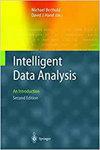Filter pruning via feature map clustering
IF 0.8
4区 计算机科学
Q4 COMPUTER SCIENCE, ARTIFICIAL INTELLIGENCE
引用次数: 0
Abstract
With the help of network compression algorithms, deep neural networks can be applied on low-power embedded systems and mobile devices such as drones, satellites, and smartphones. Filter pruning is a sub-direction of network compression research, which reduces memory and computational consumption by reducing the number of parameters of model filters. Previous works utilized the “more-simple-less-important” criterion for pruning filters. That is, filters with the smaller norm or more sparse weights in the network are preferentially pruned. In this paper, we found that feature maps are not fully positively correlated with the sparsity of filter weights by observing the visualization of feature maps and the corresponding filters. Hence, we came up with the idea that the priority of filter pruning should be determined by redundancy rather than sparsity. The redundancy of a filter is the measure of whether the output of the filter is repeated with other filters. Based on this, we defined a criterion called redundancy index to rank the filters and introduced it into our filter pruning strategy. Extensive experiments demonstrate the effectiveness of our approach on different model architectures, including VGGNet, GoogleNet, DenseNet, and ResNet. The models compressed with our strategy surpass the state-of-the-art in terms of Floating Point Operations Per Second (FLOPs), parameters reduction, and classification accuracy.通过特征映射聚类进行过滤器修剪
在网络压缩算法的帮助下,深度神经网络可以应用于低功耗嵌入式系统和移动设备,如无人机、卫星和智能手机。滤波剪枝是网络压缩研究的一个分支方向,它通过减少模型滤波器的参数个数来减少内存和计算量的消耗。以前的工作使用“更简单-不重要”的标准来修剪过滤器。即优先修剪网络中范数较小或稀疏权值较多的过滤器。本文通过观察特征图和相应滤波器的可视化,发现特征图与滤波器权值的稀疏度并不是完全正相关的。因此,我们提出了一个想法,即过滤器修剪的优先级应该由冗余而不是稀疏性决定。滤波器的冗余性是衡量该滤波器的输出是否与其他滤波器重复。在此基础上,我们定义了一个冗余索引来对过滤器进行排序,并将其引入到我们的过滤器修剪策略中。大量的实验证明了我们的方法在不同模型架构上的有效性,包括VGGNet、GoogleNet、DenseNet和ResNet。使用我们的策略压缩的模型在每秒浮点运算(FLOPs)、参数减少和分类精度方面超过了最先进的技术。
本文章由计算机程序翻译,如有差异,请以英文原文为准。
求助全文
约1分钟内获得全文
求助全文
来源期刊

Intelligent Data Analysis
工程技术-计算机:人工智能
CiteScore
2.20
自引率
5.90%
发文量
85
审稿时长
3.3 months
期刊介绍:
Intelligent Data Analysis provides a forum for the examination of issues related to the research and applications of Artificial Intelligence techniques in data analysis across a variety of disciplines. These techniques include (but are not limited to): all areas of data visualization, data pre-processing (fusion, editing, transformation, filtering, sampling), data engineering, database mining techniques, tools and applications, use of domain knowledge in data analysis, big data applications, evolutionary algorithms, machine learning, neural nets, fuzzy logic, statistical pattern recognition, knowledge filtering, and post-processing. In particular, papers are preferred that discuss development of new AI related data analysis architectures, methodologies, and techniques and their applications to various domains.
 求助内容:
求助内容: 应助结果提醒方式:
应助结果提醒方式:


